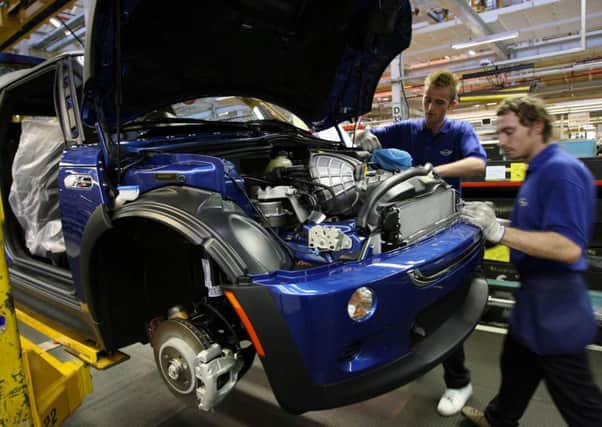Martin Flanagan: Britain keeps its bearings despite Brexit


This article contains affiliate links. We may earn a small commission on items purchased through this article, but that does not affect our editorial judgement.
The sector’s relative evisceration was completed with the return of recession in the early 1990s and the politically piebald administrations of John Major and Tony Blair.
But let’s give thanks for small mercies. Manufacturing is still 12 per cent of the UK economy, and it has held its end up since the jolt of last summer’s Brexit vote, which some greeted as virtually apocalypse now or apocalypse delayed for the country’s outlook.
Advertisement
Hide AdAdvertisement
Hide AdThe latest data shows there was almost a festive fizz in the sector last month, with output and new orders among manufacturers hitting a two-and-a-half year high.
The Markit/Chartered Institute for Procurement & Supply (Cips) purchasing managers’ index jumped to 56.1 in December, up from 53.6 in November, and where any figure above 50 signals growth.
Of course, the 15 per cent and 10 per cent slump in the value of the pound to the US dollar and euro respectively after the EU referendum have been pennies from heaven for the UK’s manufacturing exporters as their goods become cheaper abroad.
Between 40 and 50 per cent of our goods go to the region we are shortly to issue divorce proceedings against. So such a trading advantage is an undeniably significant in the unexpected health of the sector.
But yesterday’s stronger-than-expected data cannot be attributed solely to the maverick factor of currency swings. For every manufacturer who gains from lower sterling making its products more inexpensively attractive abroad, there is another one hit by the rising cost of its imported raw materials for exactly the same reason.
There is a trade-off in tailwind and headwind, even if they don’t quite cancel each other out. In addition, yesterday’s data showed that the sector’s output and new orders growth was also down to improved domestic demand, which stands discrete from currency swings.
December’s resilience was not down to the pound’s weakness alone. Today the spotlight falls on construction sector data, which is likely to paint a mixed picture, before I expect services figures out on Thursday to show the UK’s current economic counter-punching is broad‑based.
